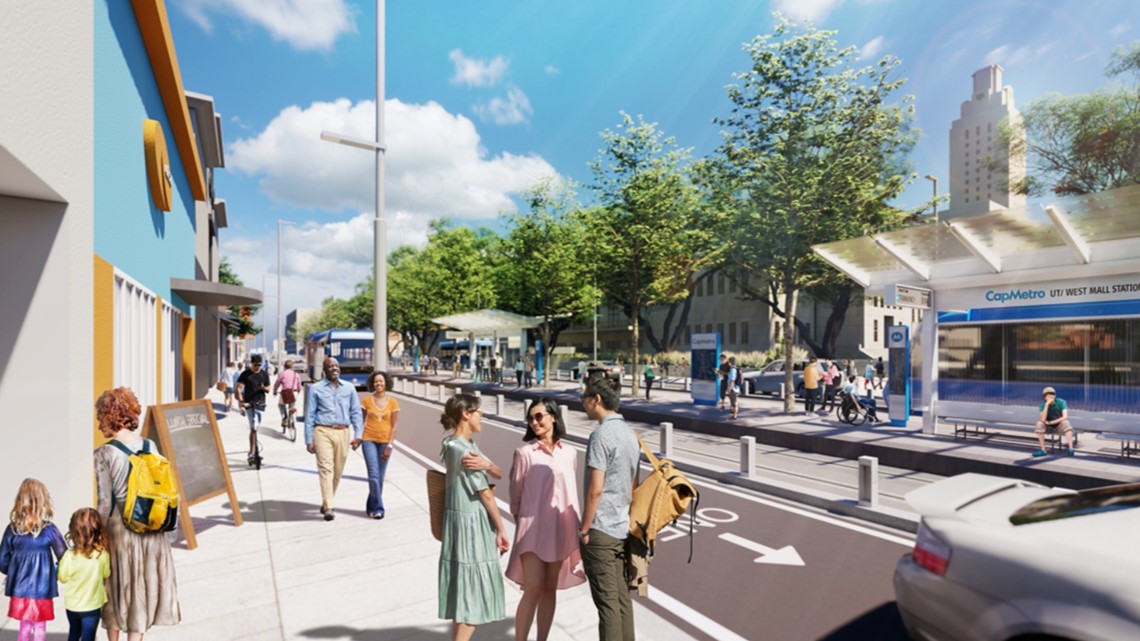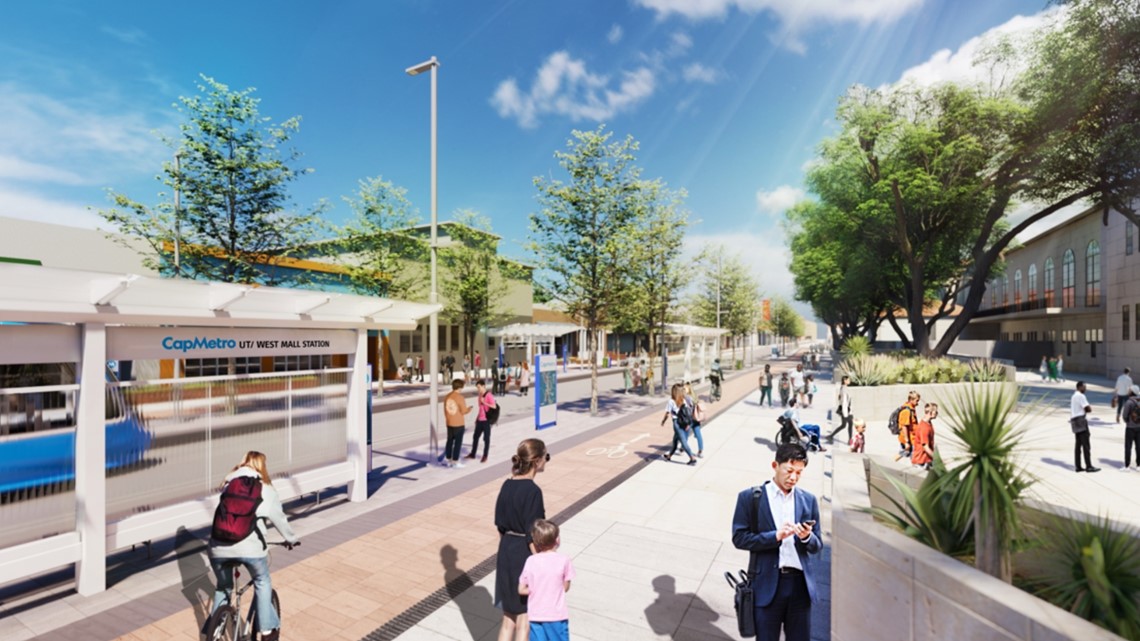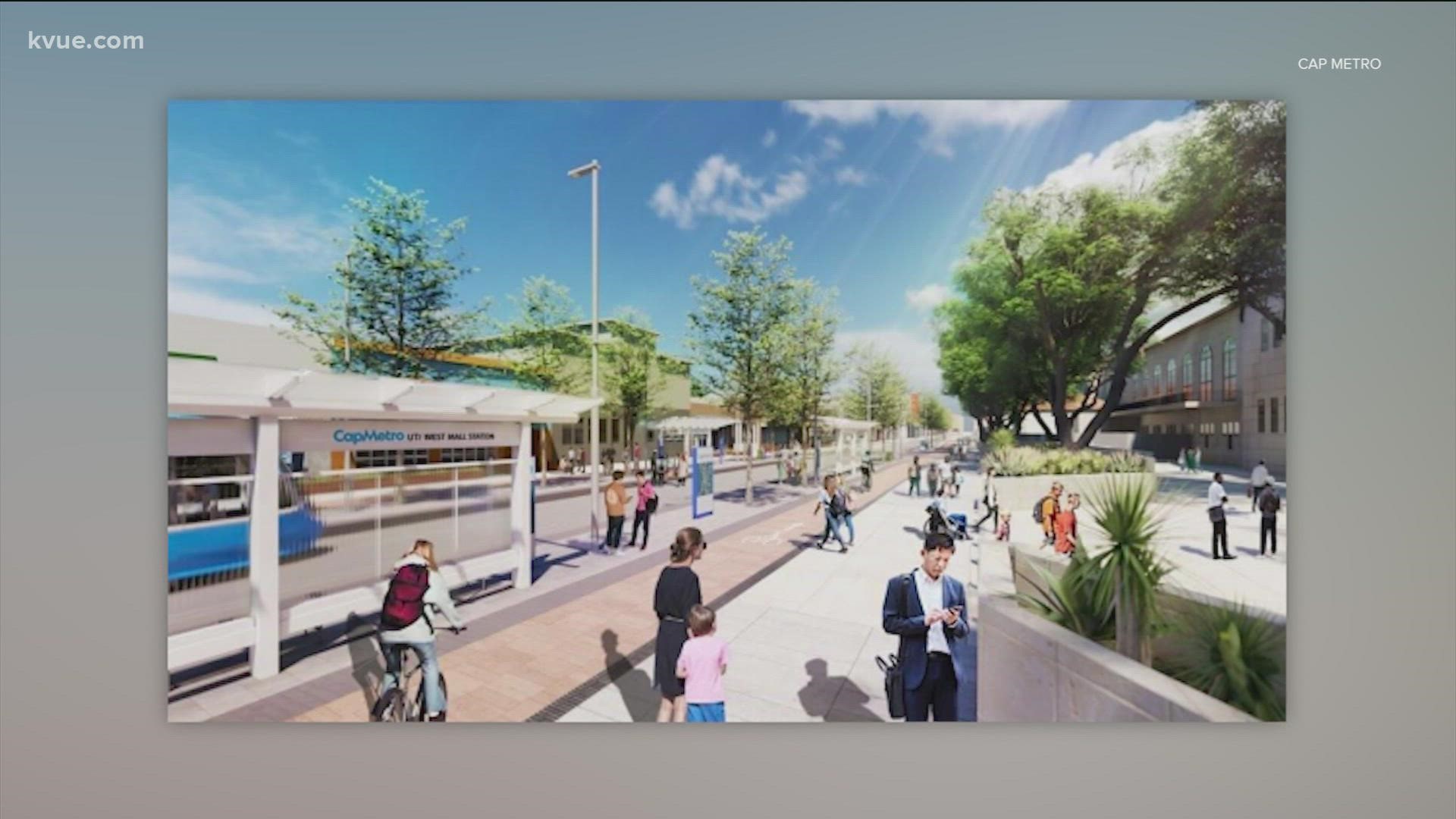AUSTIN, Texas — The Austin Transit Partnership (ATP), created to act on behalf of Capital Metro and the City of Austin, held two workshops on Wednesday for the public to share their input on a light rail line coming to The Drag in the future.
The light rail would run through the section of Guadalupe Street that divides the University of Texas from West Campus. It will be part of the Orange Line, a 20-mile light-rail line that would operate along North Lamar Boulevard and Congress Avenue from the Tech Ridge park-and-ride at Howard Lane south to Slaughter Lane.
The Orange Line is part of Project Connect, a massive voter-approved transit plan for the City of Austin. CapMetro wants input from University of Texas students, staff and faculty along with community members.
Two different potential designs were presented at the workshop: an option including the rail and a traffic lane in each direction, and another including the light rail and no traffic lanes.
Option A includes the light rail and one bus/traffic lane in each direction. This layout would mean narrower sidewalks and no separated bike lanes. The traffic lanes could create slowdowns for all traffic in the area, according to the information sheet provided. Bus-to-rail transfers are more direct in this option.


Option B features a transit mall with no traffic lanes or dedicated bus lanes. However, it may be possible for buses to share the light rail guideway. Bus-to-trail transfers with this option may be less direct.


One in-person workshop was held at the William C. Powers Student Activity Center on the UT campus on Wednesday afternoon. A second workshop was held in a virtual format Wednesday evening at 5:30 p.m.
According to the Project Connect website, the Orange Line was identified as one of the dedicated-pathway high-capacity transit corridors in the project. The need for the line, according to the website, is shown by increasing congestion within the project corridor and parallel roadways, worsened by the inability to expand roadway capacity enough to meet demand.
Editor's Note: A previous version of this story included information from a July 2021 meeting. This story has been updated with the most recent project information presented at the workshops.
PEOPLE ARE ALSO READING:

